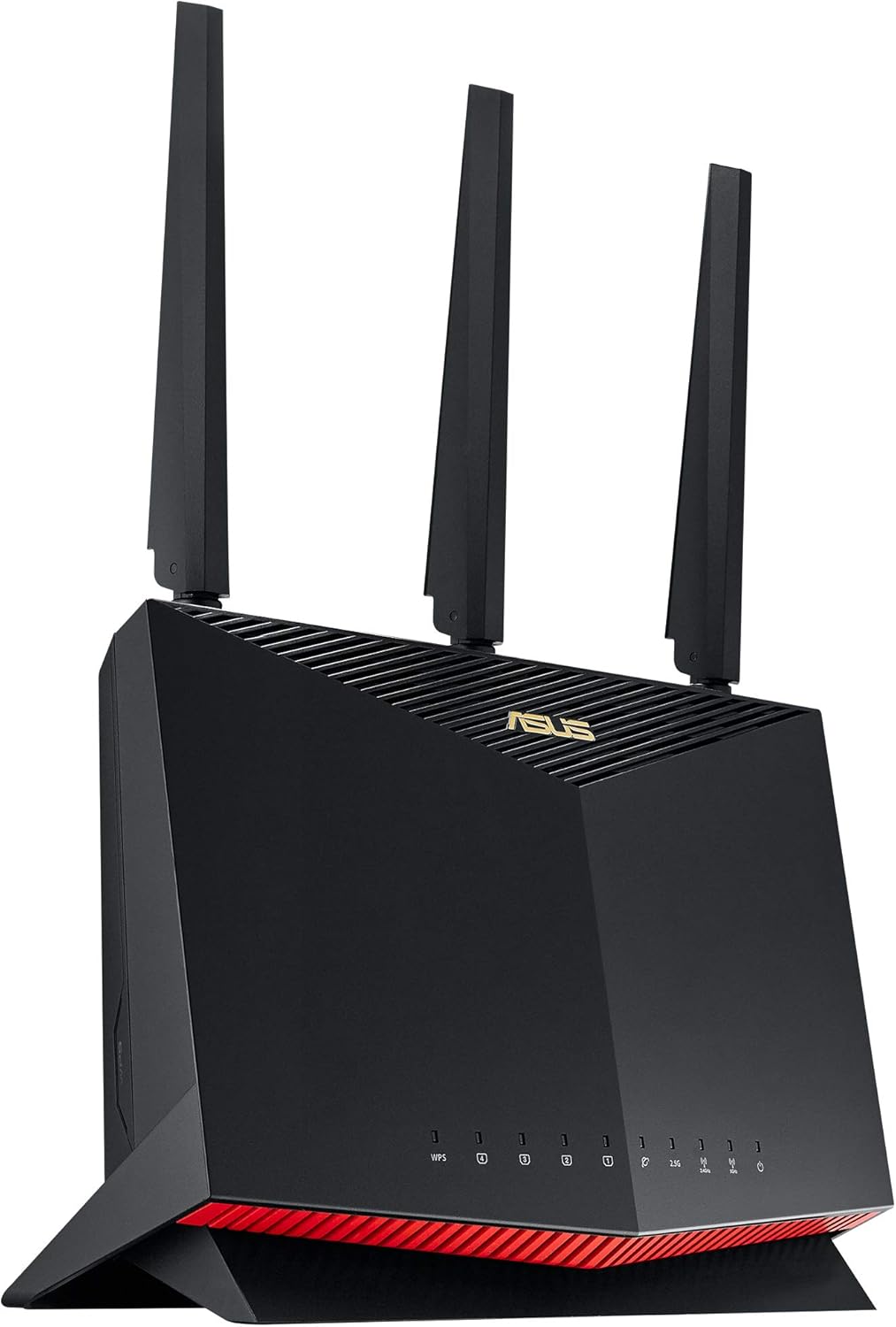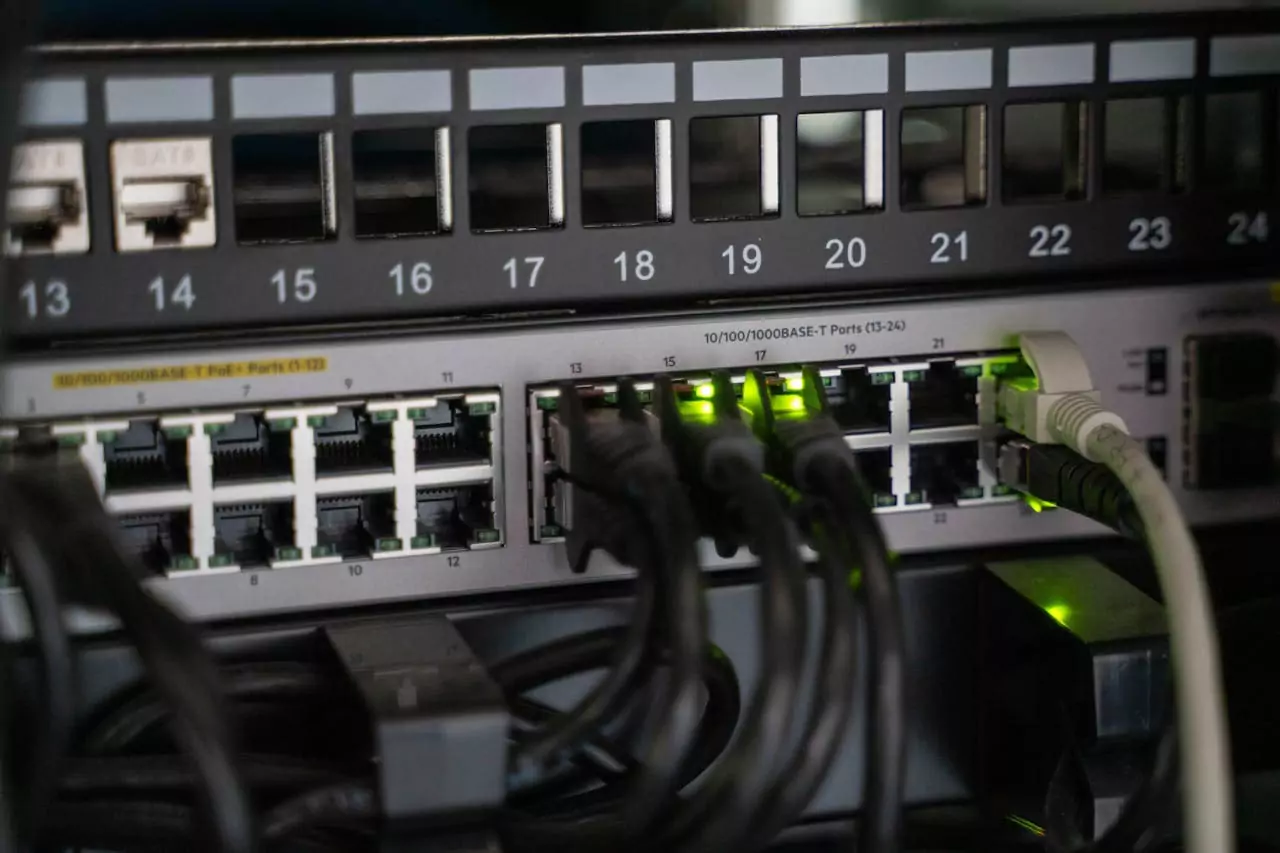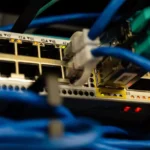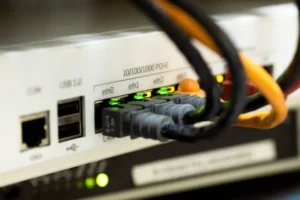Now Reading: Signs Your Home Router Might Be Hacked
- 01
Signs Your Home Router Might Be Hacked
- Home
- Home Security
- Signs Your Home Router Might Be Hacked
Signs Your Home Router Might Be Hacked
![]() Anne MaddisonHome Security, Home InternetJuly 30, 2025196 Views
Anne MaddisonHome Security, Home InternetJuly 30, 2025196 Views
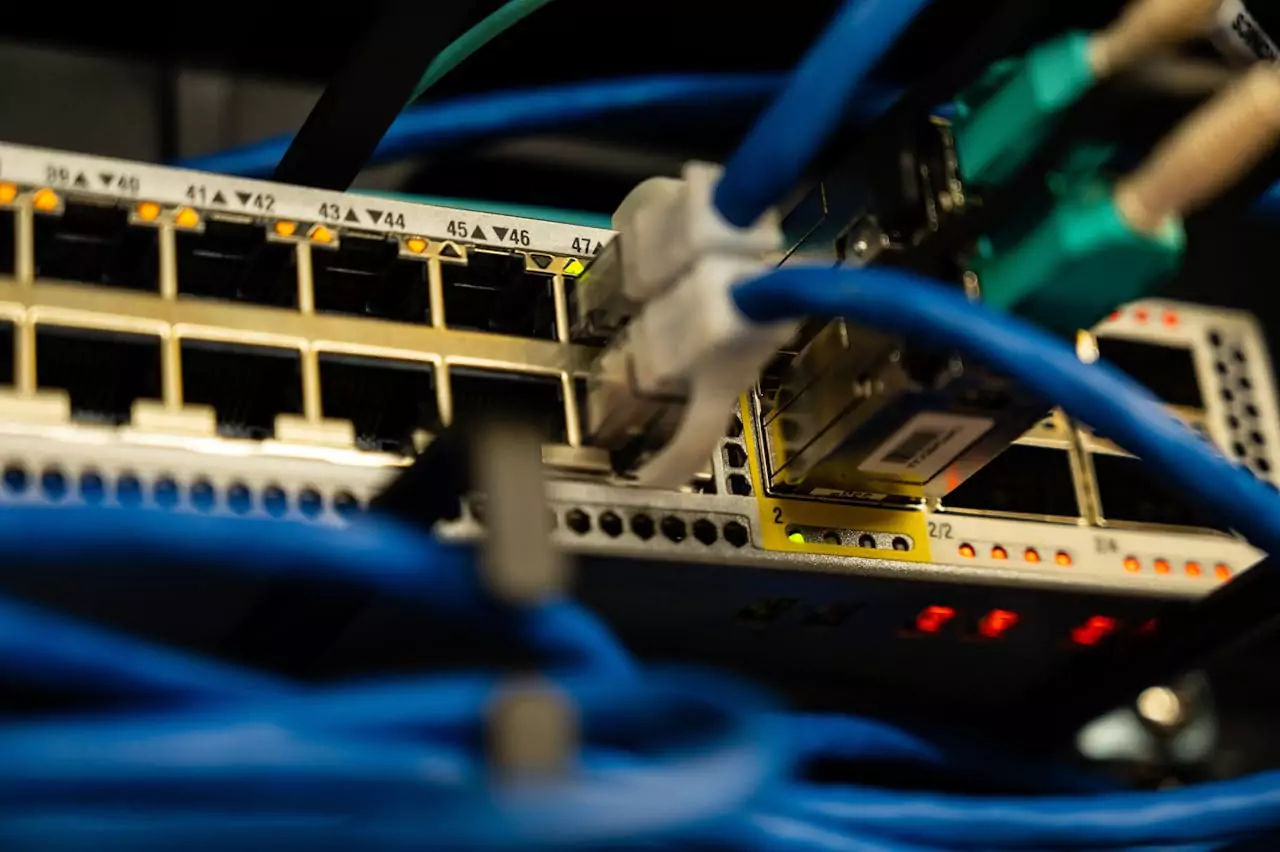
Your home router is like the front door to your internet. It connects everything in your house to Wi-Fi—your phone, laptop, TV, and even smart home devices. But if that door isn’t secure, hackers can sneak in and cause trouble without you even knowing.
When someone hacks your router, they can change your settings, watch what you do online, send you to fake websites, or even spread viruses to your devices. In some cases, they use your internet connection for themselves or try to steal your personal information. The scary part is, it doesn’t always look obvious. Your Wi-Fi might still work, but strange things could start to happen.
Here are some early warning signs:
- Your internet suddenly becomes very slow, even when no one is using it
- Strange websites show up when you try to visit normal ones
- You get pop-ups or browser warnings about unsafe connections
- You see devices on your Wi-Fi that you don’t recognize
If these things are happening in your home, your router might have been hacked. But don’t worry—this guide will help you understand how it happens, what it means, and what you can do to protect your home network. The steps are simple, and anyone can follow them, even if you’re not a tech expert. Small changes can make a big difference in keeping your internet safe.
How Hackers Get Into Your Router
Most home routers get hacked because of simple security issues that are often overlooked. Hackers don’t always need to be experts. In many cases, they take advantage of weak settings that are easy to guess or not updated. Here are the most common ways they break in:
Default login credentials
Many people never change the default username and password that come with the router. These are often things like “admin” for both the username and password. Hackers can easily find these default logins online and use them to access your router settings.
Outdated firmware
Firmware is the software inside your router that controls how it works. Over time, companies release updates to fix bugs or security problems. If your router’s firmware is old, it might have known security flaws that hackers can use to get in. Many people don’t update their firmware regularly, which leaves their router open to attacks.
Weak or no Wi-Fi password
An open Wi-Fi network, or one with a weak password, is like leaving your front door unlocked. If someone nearby connects to your Wi-Fi, they might be able to snoop on your activity or try to hack into your devices. A strong password with a mix of letters, numbers, and symbols helps keep unwanted users out.
Remote access turned on
Some routers have a feature called remote management, which lets you log into your router from outside your home. This can be useful, but if it’s turned on and not secured, hackers from anywhere in the world can try to log in. If you don’t need this feature, it’s best to turn it off.
Each of these problems may seem small, but together, they can leave your entire network at risk. The good news is that most of these issues are easy to fix once you know what to look for.
What Hackers Can Do Once They’re In
Once a hacker gets access to your router, they can do more than just mess with your internet. They can take control of your entire home network and everything connected to it. Here’s what could happen:
Monitor everything you do online
Hackers can see which websites you visit, what you search for, and even what you type if you’re not using secure (HTTPS) sites. This kind of spying can give them access to personal information, including your online accounts and habits.
Redirect you to fake websites
Instead of loading the real website you clicked, they can send you to a fake version. These fake sites are designed to steal your login details, credit card numbers, or trick you into downloading harmful software without knowing it.
Change your DNS settings
DNS (Domain Name System) helps your browser know where to go when you type a website name. If a hacker changes your DNS settings, they can control which websites show up, block certain sites, or send you to harmful ones instead.
Spread viruses to your devices
Once inside the network, hackers can try to send viruses, spyware, or ransomware to computers, phones, or other smart gadgets. This can slow down your devices or steal your data without you even noticing.
Control your smart devices
If you have smart cameras, lights, locks, or thermostats, a hacker might be able to take control of them. This can put your home security at risk or just cause annoying problems with how your devices work.
Even if it starts with just one weak password or outdated setting, a router hack can affect every device in your home. That’s why it’s important to watch for the warning signs and keep your network safe.
Simple Ways to Keep Your Home Router Secure
You don’t have to be a tech expert to protect your router. With just a few smart habits, you can make it much harder for hackers to get in. Here’s what you should do:
Change the default admin username and password
Most routers come with a default login like “admin” and “password.” Hackers know these and try them first. Change both to something strong and unique to block easy access to your settings.
Use a strong Wi-Fi password
Make your Wi-Fi password long and hard to guess. Avoid names, birthdays, or common words. Use a mix of letters, numbers, and symbols so people can’t just guess their way in.
Update the router’s firmware regularly
Firmware is like the software that runs your router. Companies release updates to fix bugs or security holes. Check your router’s settings every few months and install updates if they’re available.
Turn off remote access if you don’t use it
Remote access lets you log in to your router from anywhere, but it also gives hackers the same chance. If you don’t need this feature, it’s best to turn it off to lower the risk.
Disable WPS (Wi-Fi Protected Setup)
WPS makes it easier to connect new devices without typing a password, but it also has security flaws. It’s safer to keep this setting turned off and enter passwords manually.
Use WPA3 or WPA2 encryption
Encryption scrambles your data so others can’t read it. Check your router’s security settings and make sure it’s using WPA3 (best) or WPA2 (still good). Avoid older types like WEP, which are no longer safe.
Use a guest network
If visitors need Wi-Fi, give them access to a separate guest network. This keeps your main network private and limits what others can access.
Avoid suspicious links and emails
Some malware can target routers. Don’t click on strange links or download files from unknown emails. Even one click can be enough to infect your network.
These steps take just a few minutes but can protect your entire home from cyber threats. A secure router means safer internet for everyone in your house.
What To Do If You Suspect Your Router Was Hacked
If your internet has suddenly slowed down, unfamiliar devices are connected, or strange websites are popping up when you browse, your router may have been compromised. Hackers who get access to your router can spy on your activity, control your smart devices, or redirect you to dangerous websites. It’s important to act quickly but calmly. The good news is you don’t need to be an expert to take back control. Follow these clear steps to clean up your network and improve your security going forward.
Step 1: Reboot Your Router
Start with a simple fix. Rebooting your router can sometimes stop small-scale hijacks or bugs. Just unplug it from the power outlet, wait about 10 seconds, then plug it back in. This won’t delete your settings, but it will disconnect temporary connections and could knock out unauthorized access.
If you want more guidance on how often or when to do this, check out our full guide on router rebooting.
Step 2: Check for Firmware Updates
Many people don’t realize that routers have software (called firmware) that needs to be updated regularly. Outdated firmware often has security holes that hackers can exploit.
To check for updates:
- Log into your router settings using a browser (usually by typing 192.168.0.1 or 192.168.1.1).
- Look for an option labeled “Firmware,” “Software,” or “System Update.”
- If an update is available, install it.
New firmware patches known vulnerabilities and helps your router stay secure.
Step 3: Change All Passwords
After a suspected hack, it’s essential to change all related passwords — not just your Wi-Fi.
You should update:
- The router’s admin login (used to access settings)
- Your Wi-Fi network password
- Any linked cloud or app-based router accounts
Make sure your new passwords are strong and unique. Use a mix of upper and lowercase letters, numbers, and symbols. Avoid personal information like names or birthdays.
Step 4: Remove Unknown Devices
Hackers or neighbors might be using your Wi-Fi without permission. To check:
- Log in to your router’s settings
- Find the section labeled “Connected Devices” or “Device List”
- Review all the devices — phones, TVs, laptops, etc.
If you see anything unfamiliar, block or remove it. You may need to reconnect your own devices after changing passwords, but this ensures only trusted users have access.
Step 5: Reset Your Router (If Nothing Else Works)
If problems continue, a full factory reset might be the best option. This erases everything — including settings, connected devices, and passwords.
- Press and hold the small reset button on the back of your router for about 10 seconds
- The router will restart with its original settings
- After that, log in again, set up your network name and password, and apply all the security steps above (strong passwords, updated firmware, etc.)
Only do this if other steps didn’t work, since it requires setting everything up from scratch.
Does Choosing a Router Brand Help With Security?
Yes — the router brand you choose makes a big difference when it comes to protecting your home network. Not all routers offer the same level of security. Some budget models or unknown brands may not get regular updates. Others might lack the tools needed to block threats or manage settings easily. In many cases, they can even have outdated software or weak default configurations, which opens the door to hackers.
Trusted brands, on the other hand, usually offer better security features, frequent firmware updates, and more control through apps. These brands also respond faster when a vulnerability is found, sending out fixes to keep your network protected. Choosing a well-known router brand is one of the easiest ways to improve your home internet security from the start.
Recommended Routers for Better Security
If you’re looking for a router that balances good performance with strong security, here are a few models worth checking out:
ASUS RT‑AX86U Pro (AX5700): Fast, Strong, and Secure Wi‑Fi
The ASUS RT‑AX86U Pro is a powerful Wi‑Fi 6 router made for fast internet at home. It can handle speeds up to 5700 Mbps, which is great for gaming, watching videos, and using many devices at the same time. It also has a special 2.5G port that gives faster wired connections for things like gaming PCs or smart TVs.
This router keeps your home network safe with something called AiProtection Pro. It blocks bad websites, checks for online threats, and helps stop viruses before they reach your devices. It updates itself in the background and doesn’t need a subscription or setup to work. You also get parental controls to block certain content or set screen time limits—everything can be managed from the ASUS app on your phone.
Another cool feature is Instant Guard, which lets you use a secure connection when you’re away from home. It’s like having a private tunnel back to your home Wi-Fi, so you can stay safe on public networks. With automatic updates and strong protection built in, this router makes it easy to keep your internet fast and secure.
TP-Link Archer AX55: Budget-Friendly Security for the Modern Home
The TP-Link Archer AX55 is a great option for anyone looking for a reliable and affordable Wi-Fi 6 router. It delivers fast speeds and stable performance for everyday tasks like browsing, streaming, and light gaming. Even in busy households, it handles multiple devices without noticeable slowdowns, thanks to the efficiency of Wi-Fi 6.
For security, the AX55 comes with TP-Link HomeShield, which offers basic protection features like network scanning, intrusion prevention, and limited parental controls. While not as advanced as premium security tools, it still adds an important layer of defense for the average home user. You can access these features through the TP-Link Tether app, which makes monitoring and adjusting settings quick and simple.
One of its best features is automatic firmware updates, which help keep your router secure without needing to check manually. The setup process is beginner-friendly and doesn’t require tech skills. If you want strong Wi-Fi performance with entry-level security features at a lower cost, the Archer AX55 is a solid choice.
Why Reliable Brands Matter
Choosing a good router is not just about getting a strong signal. It also plays a big role in protecting your home network. Reliable brands take security seriously and include features that help prevent hacking and data theft. Here’s why using a trusted router brand makes a real difference:
Regular Security Updates
Well-known brands release firmware updates more often. These updates fix bugs and close security gaps that hackers might use. Less reliable brands may stop supporting their routers, leaving them vulnerable over time.
Built-in Security Features
Quality routers come with tools like firewalls, guest networks, and malware protection. These features give you more control and keep outside threats from reaching your personal data.
Easier to Use and Manage
Trusted brands usually offer easy-to-use apps and clear settings. This makes it simpler for you to check for updates, manage devices, and tighten your security settings without much effort.
Stronger Security Standards
Top brands follow modern safety standards like WPA3 encryption and secure remote access. They also build their devices with better-quality components to reduce risk.
A reliable router helps you stay safe online. It acts as a strong shield between your home and outside threats, protecting every device connected to your Wi-Fi.
Final Thoughts
Yes, your home router can be hacked. But the good news is, you don’t need to panic. Most router attacks happen because of weak passwords, outdated settings, or old devices that don’t get updates. These are all things you can fix with just a little effort.
Start with the basics: change the default login, use a strong Wi-Fi password, and keep your firmware up to date. If you haven’t looked at your router’s settings in a while, now is a good time. Even small actions — like turning off features you don’t use or rebooting the router regularly — can add extra layers of protection.
With the right habits and equipment, you can stay one step ahead of hackers and enjoy a safer, more secure home network.
Disclaimer: Some links on this page are affiliate links. This means we may earn a small commission at no extra cost to you if you make a purchase through them.
Related Posts
Previous Post
Next Post
Previous Post
Next Post
Home AppliancesJuly 28, 2025
Can Air Conditioner Make You Sick?
Home SecurityJuly 30, 2025
Signs Your Home Router Might Be Hacked
Home AppliancesAugust 24, 2025
Are Home Air Conditioner Tune Ups Necessary
Climate ControlAugust 23, 2025
Can Air Conditioning at Home Trigger Asthma?
- 03
Home AppliancesJuly 28, 2025
Can Air Conditioner Make You Sick?
- 04
Home InternetJuly 30, 2025
Signs Your Home Router Might Be Hacked


